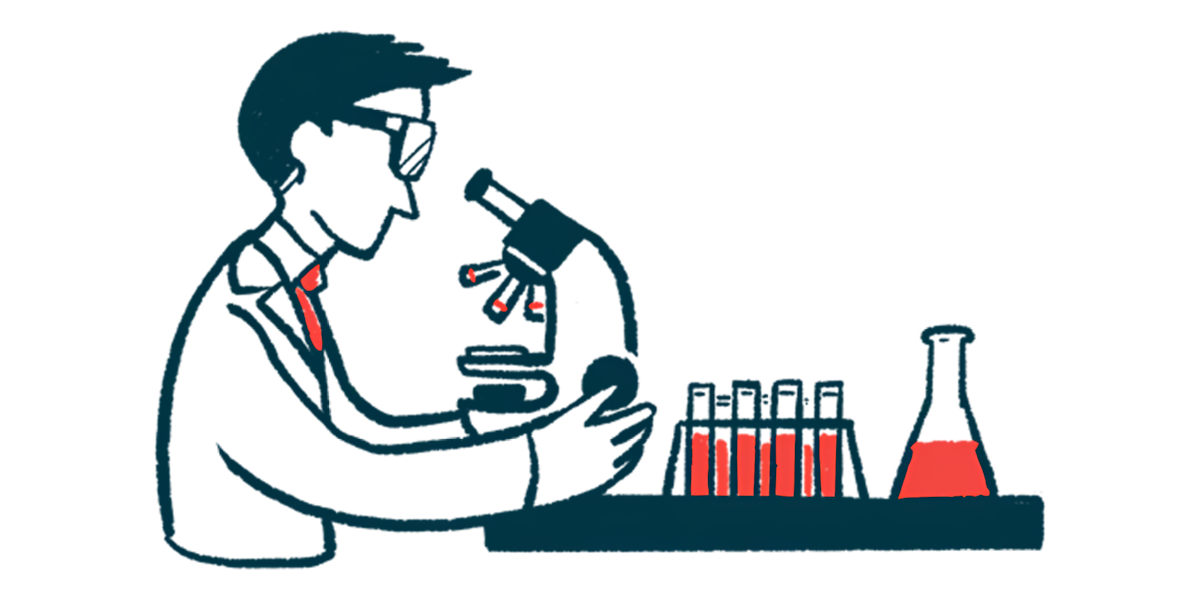Stabilizing bonds in clotting protein may thwart hemophilia A inhibitors
FVIII exists in partially disulfide-bonded states, letting it take different shapes

The blood-clotting protein factor VIII (FVIII) that’s missing or faulty in people with hemophilia A is flexible and adopts multiple shapes, some of which favor the binding of neutralizing antibodies that can reduce the effectiveness of FVIII replacement therapies, researchers have learned.
“This helps explain why some people develop resistance to treatment and opens the door to designing more stable forms of FVIII that are less likely to be targeted by the immune system,” Diego Butera, PhD, the study’s first author and researcher at the Centenary Institute in Australia, said in a university news story. The discovery was detailed in the study, “Patient anti-FVIII drug antibodies bind preferentially to a subset of FVIII covalent,” published in Blood Advances.
A genetic bleeding disorder, hemophilia A is caused by a deficiency or dysfunction of FVIII, which impairs the blood’s ability to clot. As a result, people with the condition can experience excessive bleeding that can be prolonged. FVIII replacement therapy is the gold standard treatment for hemophilia A and involves regularly administering a version of it to restore clotting and prevent bleeding.
In up to 30% of patients with severe hemophilia A, however, the immune system recognizes the delivered FVIII as foreign and produces antibodies, called inhibitors, against it. Because most of these antibodies target the same parts of FVIII, developing them to one replacement therapy generally precludes using other FVIII products.
Like many proteins, FVIII’s shape is stabilized by chemical links called disulfide bonds, which help maintain its function. FVIII contains eight disulfide bonds.
The hunt for a more stable FVIII
But not all disulfide bonds are completely formed in many protein populations, emerging evidence indicates. In fact, the blood clotting proteins fibrinogen and von Willebrand factor exist in multiple disulfide-bonded states in the bloodstream. This lets them be more flexible and supports their function.
Butera and his colleagues investigated whether FVIII exists in partially disulfide-bonded states, which would let the protein take on slightly different shapes and be more flexible, but also may make it more likely to be targeted by inhibitors.
They found that all eight disulfide bonds in FVIII were incompletely formed in about 10% to 70% of the molecules in FVIII populations. Consistent with this result, an examination of FVIII’s structure at the atomic level showed that some disulfide bonds weren’t completely formed.
“Our research highlights a broader principle — that therapeutic proteins can exist in multiple structural forms and understanding these variations is key to improving the safety and effectiveness of protein-based treatments,” said Philip Hogg, PhD, the study’s senior author and a researcher at the Centenary Institute’s Centre for Cancer Innovations and the University of Technology Sydney.
Researchers then evaluated the binding of five anti-FVIII antibodies, representing those found in hemophilia A patients, to the population of FVIII disulfide-bonded states. All five anti-FVIII antibodies bound preferentially to versions of FVIII where two or three of its eight disulfide bonds weren’t completely formed. Further experiments confirmed the antibodies weren’t directly breaking the bonds.
“Our research showed that antibodies from patients prefer to bind to these alternate forms of FVIII, interfering with how the treatment works,” Butera said.
When certain disulfide bonds were removed from FVIII, its structure became more flexible and some antibodies bound to it more strongly. Computer simulations of FVIII movement also showed that this added flexibility favored the binding of anti-FVIII antibodies.
“By engineering FVIII to include more stable disulfide bonds that help better maintain its structure, we could potentially create versions of the protein that last longer and work more effectively for patients,” Hogg said.







